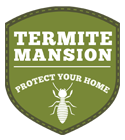Termite Management Systems and Terminology Explained in Detail
Considering how well known this pest is, there is a lot of misinformation in the public sphere regarding termite management terminology.
Termites (otherwise known as white ants) are known by name and the damage they can cause is infamous, but many homeowners aren’t aware of exactly what they are and how to deal with them.
Through our decades of experience, we have noticed a lot of misuse of terminology used in the industry that has added to the confusion. Many new methods and technologies have been used in termite management systems over the last two decades, and “monitoring” and “baiting” are two of the most common tactics used.
Monitoring
Monitoring (often incorrectly referred to as baiting in termite management terminology) is the act of finding out if your home has dangerous species of termites nearby that could potentially damage your home.
Monitoring does not use poison to attract these pests but uses various cellulose/ timber products to catch them in numbers where they can then be treated. This cellulose/ timber within the monitor is sometimes referred to incorrectly as bait.
We use the Termite Mansions as monitors that attract the termites if they are in the area. Similar to a home security or burglar alarm system that monitors your perimeters for burglars, our Termite Mansions are used to monitor the surrounds of your home for white ants.
Baiting
Traditionally, bait is the substance with a chemical / poison that is made up with water and is fed to / added to the monitor once termites are within.
Termite Bait is a food product and spoils once made up unless it is being eaten by termites. Bait is never added to anything that doesn’t have active termites. Bait would be better described as food to kill the queen and baiting would be better described as feeding the queen remotely by getting her workers to transfer to her in correct termite management terminology.
This confuses most people when using the term bait or baiting in termite management terminology. When you fish you use bait to lure the fish, but the termite / pest control industry calls bait the food or solution that they feed to the pests. We see the Termite Mansion as the lure (if they are around) which works with Easy Termite Bait that is taken back to the queen and takes her out.
To further add confusion, bait (our Easy Termite Bait) may be directly added to active termites within a structure or home, but only when provided within a container (e.g. Pod) that can be sealed to the termite workings in their own environment. Again, the termites will consume the Easy Termite Bait solution and take it back to the queen, where it then kills her.
How the two work together as an effective termite management system
Australian Standards recognises the distinct difference between baiting an active house directly and protecting that home with monitors (like Termite Mansion) for future attack from new nests. Once a house is being eaten and attacked by termites, bait (Queen Killer) needs to be applied directly to the attack via sachets of bait sealed to the termite workings. Placing monitors around a home in the process of attack is only protecting from future attacks by new nests.
Subterranean species dig tiny, complex tunnels in the earth in search of food. Wood is one of their favourite meals, and if they encounter any while foraging, they will attract the colony to the site (often a building) and begin feeding on the timber. One of the major reasons they cause so much damage is their ability to remain unnoticed for years, and by this point it is often too late.
For quite some time, the primary technique used for termite management was applying a liquid pesticide to the earth around the building to create a guard that prevents termites from entering. Although this method was effective at either repelling or killing the insects, the strength of the pesticide was found to cause environmental damage and the strongest liquids were subsequently banned. In addition, it is very difficult to create a comprehensive barrier around an entire building; there are countless cracks and gaps that can remain exposed, which became even more of a problem when weaker pesticides were required by law.
Baiting (which we use the termite management terminology as feeding/using Easy Termite Bait) uses a much different way of thinking to deal with the problem. While there is no barrier around the building, any foraging termites feed on the bait which is then spread throughout the colony. Even though this helps reduce numbers, the key to the approach is that the bait is spread right through to the queen so that the colony is completely removed. Using a monitoring system such as the TermiteMansion, homeowners can be aware of any potential infestations so that they know when to use the bait.
One thing that varies with using monitoring for termite management systems is how long it takes for the insects to locate the monitor. Depending on the location and type of your property along with the time of year and food availability, it can take varying amounts of time for any foragers to reach it. The colony will often feed in more than one place within a building, so having more than one monitor drastically increases the likelihood that it will be found and fed upon. We usually see colonies in temperate climates most active during spring and summer.
For the simplest and most effective termite management systems, the TermiteMansion is the perfect choice. For the best bait to work with the monitor, the Easy Termite Bait is scientifically proven and will provide you with a long-lasting solution.

No comments